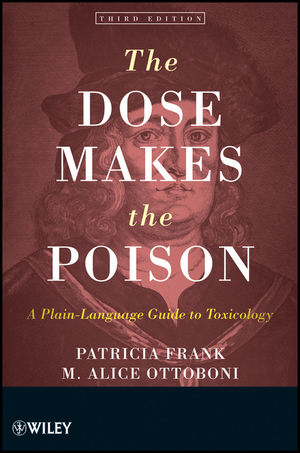The Dose Makes the Poison: A Plain-Language Guide to Toxicology, 3rd EditionISBN: 978-0-470-38112-0
Paperback
284 pages
March 2011
 This is a Print-on-Demand title. It will be printed specifically to fill your order. Please allow an additional 10-15 days delivery time. The book is not returnable.
|
||||||
Connect with Wiley Publicity
Toxins are a burning issue. A straightforward guide to a closer understanding of toxins in our daily lives is published by Wiley (March 2011). The Dose Makes the Poison: A Plain-Language Guide to Toxicology, 3rd Edition cuts through the fear generated by the media, which leads to a distortion in many people’s conceptions of toxins and chemicals.
The word “toxin” fills many of us with dread. We are exposed to media reports on a daily basis of the damage done to our bodies and to the environment by toxins. Pesticides, food additives, cosmetics, drugs and second-hand smoke are just some of the toxins we are subjected to day in day out, not to mention industrial chemicals. The constant barrage of media reports have led to a general fear of toxins, and of chemicals in general.
The Dose Makes the Poison tells you in clear and simple terms what is and what is not a toxin, and, taking a measured approach, dispels the fear. Toxins are chemicals - every substance in the world is made up of chemicals, whether man-made or naturally-occurring. But what makes a chemical a toxin is the dose, not the chemical itself, whether man-made or naturally-occurring.
The Dose Makes the Poison explains the basics and practice of toxicology, using clear examples from everyday life. One example is the common misconception that naturally-occurring chemicals are not as harmful to us as those that are man-made – botulin is one of the most highly toxic chemicals in existence and is made by bacteria. Another example is the presence in all food (including organic food), of potentially harmful natural chemicals, which only become toxins when in a high enough dose.
This is the third edition of a best-selling book, now with broader scope and updated to include current issues such as drug recalls, food contamination and nanoparticulate toxicants.
A thoroughly accessible and objective discussion of toxicology, The Dose Makes the Poison will be of great interest to all readers, even with no strong science background. It is a must-read for professionals including toxicologists, industrial hygienists, regulatory personnel, product safety workers, and health professionals.



